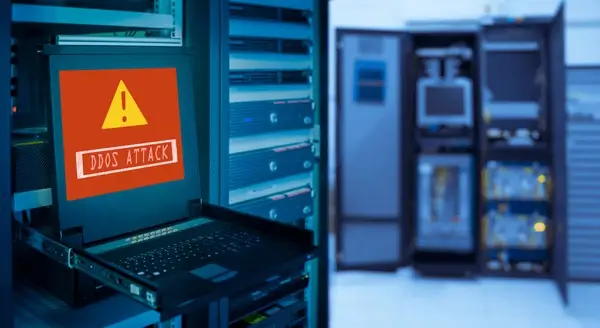DNSproxy.org DDoS protection against DDoS Attack
Understanding and defending against DDoS attacks is essential for website owners and IT professionals. These malicious attempts can overwhelm your site with traffic, disrupting it and affecting legitimate users. In this blog post, we’ll delve into the Dos of DDoS attacks and their differences and introduce you to DNSproxy.org DDoS protection against these attacks. This is not an issue to be taken lightly. You can explore this further by reading the entire article for extensive knowledge and a comprehensive overview of DNSproxy.org DDoS protection.
What is a DDoS Attack?
A DDoS (Distributed Denial of Service) attack is a malicious attempt to disrupt multiple compromised devices or systems, often referred to as a botnet (A botnet is a network of private computers infected with malicious software and controlled as a group without the owners’ knowledge, often used to carry out DDoS attacks). These attacks are directed to flood the target with traffic simultaneously. These attacks can be categorized based on the layer of the Open Systems Interconnection (OSI) model they target, showcasing their complexity and the need for specialized protection.
DNSProxy.org DDoS Protection
1996: Panix, an internet service provider, was knocked offline for several days by a SYN flood attack. This is widely considered the first major DDoS attack.
History is riddled with countless sites that have fallen victim to DDoS attacks. The question is, how can you protect yourself against these relentless and malicious DDoS attacks?
DNSProxy.org DDoS protection is not just another anti ddos protection, it provides advanced protection against ddos attacks. It utilizes a worldwide network of distributed servers. Whenever it detects malicious attacks, DNSProxy.org automatically forwards the malicious traffic away from your website, ensuring the availability and access of the site to legitimate users.
DNSProxy.org constantly monitors your site’s traffic patterns to identify unusual traffic proactively and block suspicious activities before they expand and mature into attacks. This real-time threat detection faculty helps site owners prevent downtime and keeps the site running smoothly without any inference.
DNSProxy.org absorbs and eases the impact of enormous DDoS attacks by spreading incoming traffic across multiple servers and data centers. This effective method protects your online presence and optimizes your site performance for your users during periods of heightened activity.
In other words, DNSproxy.org DDoS protection helps you prevent potential threats, especially DDoS attacks. This way, you can focus on your business growth without any worries or threats to your site, which really gives you peace of mind.
What is the difference between a DOS and a DDoS attack?
While both a DDoS (Distributed Denial of Service) attack and a DoS (Denial of Service) attack are malicious attempts to affect the availability of the target system, there’s a fundamental difference. A DoS attack is launched from a single source, making it easier to identify and mitigate. On the other hand, a DDoS attack is coordinated from multiple sources, making it more difficult to defend against.
However, there is a slight difference between them in how they work.
DoS (Denial of Service) Attack:
- In a DoS attack, a single source or computer system attempts to affect the targeted website, server, application, service, or network with overwhelming traffic, requests, or data.
- This overwhelming traffic consumes the target’s bandwidth, CPU, memory, or network connections, making it inaccessible to legitimate users.
- Since the attack comes from a single source, it may be easier to identify and mitigate than DDoS attacks.
DDoS (Distributed Denial of Service) Attack:
- In a DDoS attack, multiple compromised devices or systems (often called a botnet) are coordinated to overwhelm the target with traffic simultaneously.
- The traffic originates from various sources, making it more difficult to defend against because it’s harder to separate legitimate traffic from malicious traffic.
- Due to their distributed nature, DDoS attacks are typically more powerful and can cause more significant disruptions than DoS attacks.
With these malicious attacks, how can you protect your site against DDoS Attacks? Don’t worry. We’ll tell you how you can protect yourself against these DDoS attacks.
Conclusion:
Understanding and defending against DDoS attacks is crucial for website owners and IT professionals. DNSproxy.org DDoS protection offers advanced DDoS protection by utilizing a global network of servers to automatically detect and mitigate malicious traffic, ensuring uninterrupted access for legitimate users and safeguarding against potential threats.

